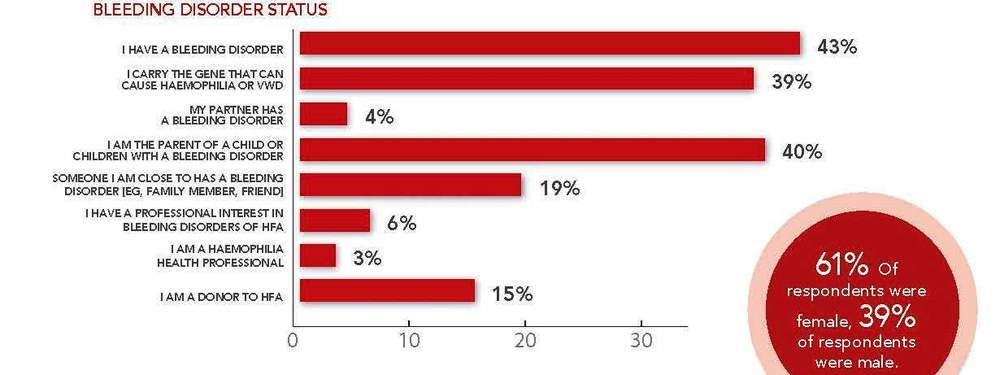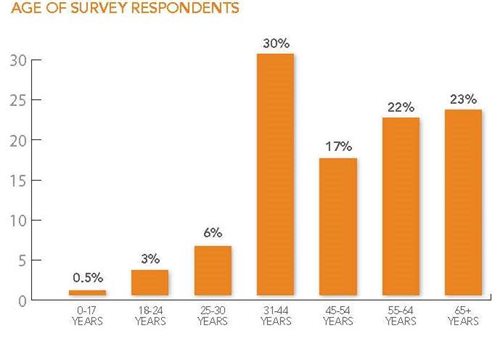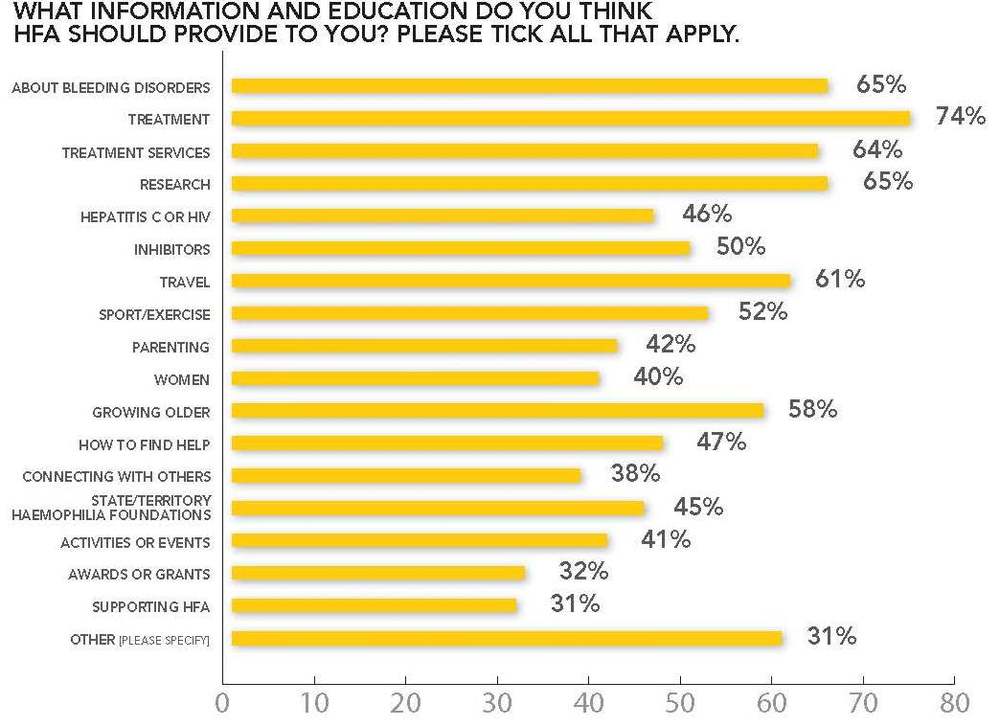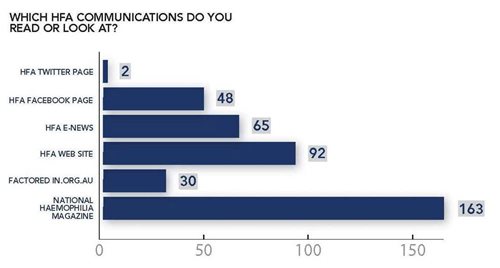HANNAH OPESKIN AND SUZANNE O'CALLAGHAN
Hannah Opeskin is Health Promotion Officer and Suzanne O’Callaghan is Policy Research and Education Manager, Haemophilia Foundation Australia
What do community members and National Haemophilia readers want or expect from HFA? What direction do they think HFA should be going in?
In June and July 2015 HFA conducted a national member survey to see how well we are meeting community needs and where we need to develop our role and activities.
196 people completed the survey. (144 – print survey; 55 – online survey).
65% of survey respondents lived in a capital city, with 35% from a regional centre or rural area.


40% of respondents found out about HFA from their Haemophilia Centre, 25% through their State/Territory Haemophilia Foundation, 17% through family or a friend, 5% through internet or website, and 2% through Facebook.
89% of respondents found the topic ‘treatment and care’ of most interest and usefulness in HFA publications. 61% listed safety and supply of treatment as most useful.
73% of respondents had looked for information regarding bleeding disorders in the past year, with 73% finding the information on the internet and 50% finding it in National Haemophilia.

People who completed the survey agreed the current HFA priority areas were important and had confidence in HFA’s direction with the community. Areas that they rated most highly were treatment and care, safety and supply and promoting research, but they also thought that representation, education and information, youth programs and fundraising were very important. Many were also keen to see an increased focus on women and rural and regional areas.
“You have been focusing more on women's issues lately which is good. For too long it has been swept under the carpet as a ‘normal’ way of life for women.”
“Maybe [more focus on] treatment in isolated rural areas, access to meds and doctors, etc.”
88% of people who completed the survey noted hearing about HFA’s advocacy work in National Haemophilia and through State and Territory Foundations (48%). Some suggested more work around travel insurance, research for a cure, community awareness and stigma and discrimination, von Willebrand disorder, and women.
70% of people who completed the survey wanted information and education provided in National Haemophilia and in the email newsletter (49%). Most look at and read National Haemophilia (90%) and the HFA website (58%). Many commented that National Haemophilia has all of the information they need and it assists them to feel connected with HFA. Conferences were also a valuable source of up-to-date information.

The HFA website remains a consistently well-respected source of information. HFA’s social media communications are relatively new, especially Twitter, and target specific and growing audiences. Some of the people who completed the survey said they do not use social media like Facebook and Twitter. Others commented that although they have “liked” the HFA Facebook page, it does not come up in their feed often – an indication that HFA may have to look into Facebook post boosting to reach all of its followers. The survey also served to raise awareness about the Factored In youth website, and some who had not been aware of it said they would now take a look.
In general most people were very satisfied with HFA’s work and keen for it to continue. HFA helps to keep them connected and informed and their interests represented. There were a number of suggestions about specific areas to develop further, including von Willebrand disorder, women and girls, rural issues, young families, information for extended family, and ageing.
“I think the HFA do a fantastic job and I think that the focus on the younger generation is important.”
“Still find it hard dealing with my son having haemophilia. Hope for a cure one day.”
“My son died of HIV in 1999 so I no longer have hands on contact. I do still read the magazine and articles to keep up with current info, etc.”
“I have 3 girls – their father has haemophilia. Talking to them about the ‘future’, the probability of having kids with the disorder.’
‘Thank you for everything you do for the bleeding disorder community. You have made lives of so many a much easier road to travel.’
Haemophilia Foundation Australia acknowledges the Traditional Owners and Custodians of Country throughout Australia, the land, waters and community where we walk, live, meet and work. We pay our respects to Elders past and present and extend that respect to all Aboriginal and Torres Strait Islander peoples.
Sign up for the latest news, events and our free National Haemophilia magazine